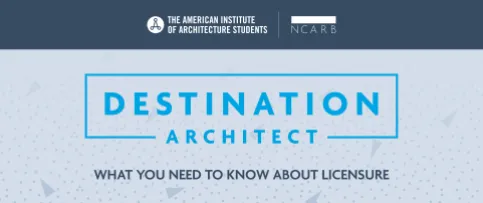We caught up with auxiliary coordinator Andrew Malanowski, AIA, NCARB, LEED APBD+C, to chat about everyday firm life, making the most of site visits, and connecting with other emerging professionals.
Why did you decide to become an architect?
I always enjoyed trying to figure out how things were built. I also like to draw and build things myself. I think a combination of these hobbies and interests allowed people to point me toward architecture as a career early on. After graduating from architecture school in the middle of the 2009 recession, I took six months off to ensure I was on the right career path. Within that time, I figured out that I did, in fact, miss the profession and wanted to become licensed. I was able to find an internship at a small firm, eventually working my way to where I am today!
What’s a typical day like at your firm Eppstein Uhen Architects?
As a project architect, I’m involved with several different projects—all at different stages of development. I may have a programming meeting with an owner in the morning, and in the afternoon I’ll spend a couple of hours coordinating systems with my engineers. Before heading home for the day, I might issue final construction documents on another project. In my role, I take the lead on developing all of the documents necessary for construction, which means working closely with other architectural staff, interior designers, and engineers.
One of my favorite things about being an architect is the construction site visits. I enjoy seeing the things I drew come to life. This is one of the most gratifying components of the job. I also learn a lot in the process about how the structures are built from the craftsmen in the field—knowledge I take back to the office for the next project’s documents. Architecture is a profession where the learning never stops, which I think helps keep things interesting.
In 2013, you made the jump from intern to project architect. How did the IDP prepare you for this transition?
IDP was the ammunition I needed to earn experience in all the areas of practice. I finished the ARE prior to finishing my IDP, and my firm helped me get those final hours I needed to earn my license. Many view IDP as a hurdle, especially when it comes to those “hard to get” experience categories. What many don’t understand, is that the IDP is a tool, not a hurdle. Use the IDP to your advantage to open a dialogue with your mentors. If you communicate openly with your supervisor about where you need hours, you will probably be given the chance to earn experience in those categories. Doing so makes it easier for them to incorporate you into their plans. Be proactive at your firm, and the IDP will be beneficial in the long run.
The promotion that came with earning my license also came with a lot more autonomy, responsibility, and independence than I had before. I still receive welcome oversight from my project managers, but the actual day-to-day management, creation, and coordination of the drawings is my responsibility. Completing the IDP gave me the experience I needed to be able to show my firm that I was qualified to perform these tasks independently.
Tell us about your responsibilities as an auxiliary coordinator.
As the auxiliary coordinator for my firm, I help bridge the gap between the interns and management. For the interns, I provide opportunities to get involved in the profession and earn IDP credit. I also provide guidance on how to navigate the path to licensure and keep them updated on rules changes, answering any questions along the way. For the management, I serve as a resource for anything IDP related. I provide guidance so they know what their responsibilities as supervisors are and keep them up to date on today’s licensure requirements. I work with firm management to advocate on behalf of interns and ensure the firm and its policies can help interns achieve their goals.
Most importantly, I’m just the guy who everyone knows they can call when they have a question about becoming licensed. Without that guy, they may interpret something incorrectly or just flat out give up. As an auxiliary coordinator, I ensure these things don’t happen and our firm’s interns stay on the track to licensure.
How do you keep interns motivated to complete the IDP?
I don’t let them make excuses by providing plenty of opportunities to earn IDP hours and by not letting a question go unanswered. Supplemental experience is a great way for them to get IDP credit outside of the work day. Experiences that fall under this category include construction site tours of firm projects or with our local AIA, completing activities in the Emerging Professionals Companion (EPC), and volunteering at community-based design centers, to name a few.
I also share my personal experiences with the license process to show them that their career goals are achievable. I often get asked, "is it worth it?" My response is "absolutely.” Achieving licensure is extremely gratifying, and it can opens doors in your personal and professional life. We work so hard to get through school, compete IDP, and pass the AREs—getting licensed it just the final step.
Supplemental experience is a great way to earn IDP credit outside of the office. What are some fun or unexpected ways your interns have earned IDP credit?
One of the most popular programs among the interns I work with are the construction site tours offered by our local AIA chapter. Our AIA chapter has a designated individual (which became me after I earned my license) that serves as a “mentor for a day,” signing off on the tour so participating interns can get one hour of construction site observation.
Another popular option is completing activities from the Emerging Professionals Companion, which we perform in-house with a group of interns. The group typically gets together during multiple working lunches, giving them easy access to experts who can assist with the activities and sign off on documentation. The activities, which you can download for free, are a great way to earn core hours.
I also organize an Emerging Professionals Design Competition through our local AIA Component. We select a site we believe is underutilized in downtown Milwaukee and challenge emerging professionals to come up with a new use for the space. In the past, the competition has attracted the attention of local businesses and developers who are interested in seeing the fresh ideas the interns generate.
Where can interns connect with other emerging professionals?
The best way I have found is through the local or state AIA component. I used our local AIA as a resource when I was a new graduate in town to meet others in the profession. Our AIA chapter sponsors ARE prep sessions, construction tours, lectures, happy hours, design competitions, and manages its own ARE study library. Many of the activities give interns supplementary IDP credit, but all of them help them in their career. I hear feedback from other interns that just seeing the critical mass of others interested in the profession makes them realize they aren't alone—at times, reinvigorating their passion and desire to be involved and get their license.
What advice do you have for aspiring architects?
We all enter school wanting to be architects. According to NCARB by the Numbers, the average time between graduation and becoming licensed usually spans around seven years, although you can easily do it in less time. I think there is one question that you can ask yourself to determine if you’re on the right path: "Do you love doing it?" If the answer is yes, then you’re in the right place. The journey may seem long, hard, and complicated, but reaching the destination and becoming an architect makes everything worth it. Earning the title was by far one of the most satisfying moments of my life. Stick with it. Architecture is an extremely gratifying profession.



